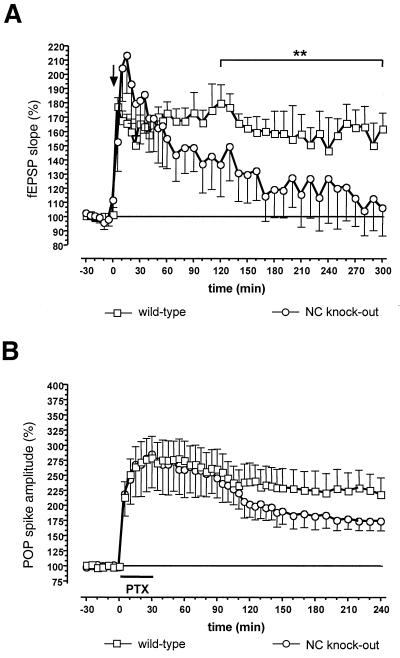FIG. 6.
Electrophysiological characterization of neurocan-deficient mice. (A) LTP. Time course of the fEPSP slope potentiation after threefold tetanization of the hippocampal Schaffer collaterals from neurocan-deficient mice (circles) compared to wild-type mice (squares). Asterisks indicate significant deviation between the wild-type group and the knockout group (P < 0.02 [Mann-Whitney U test]; n = 10). Error bars show standard errors of the means. The arrow indicates tetanization. (B) PTX induces a potentiation of the POP spike amplitude in neurcan-deficient mice (circles) and wild-type mice (squares). After stable baseline recordings, 50 μM PTX was applied to the bath containing ACSF. Immediately thereafter, potentiation of the POP spike was found; observed differences are not significant (n = 6). During drug application multiple POP spikes were recorded as an indication of PTX-induced afterdischarges, which to a lesser extent continued until the experiments ended.

